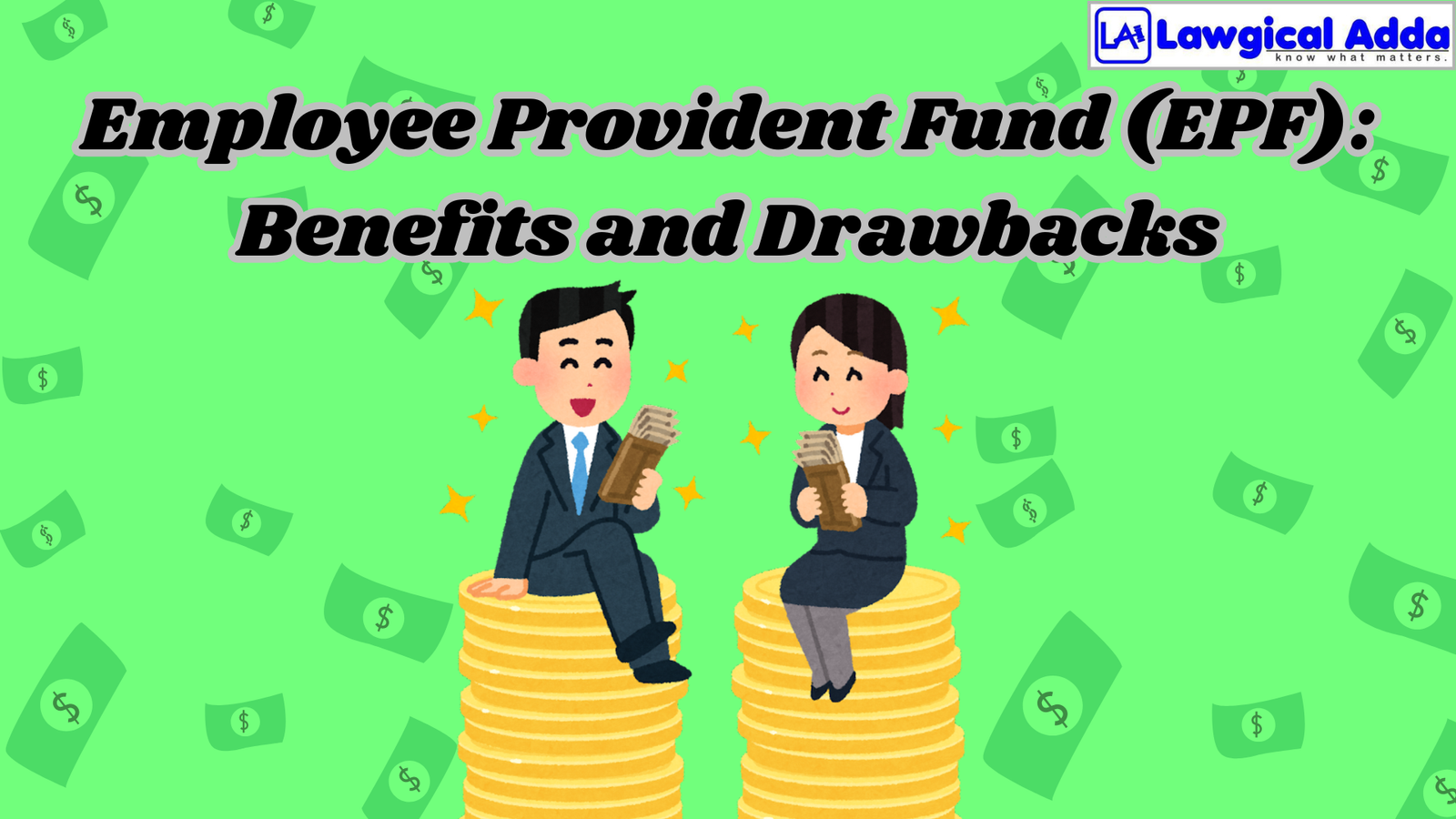Employee Provident Fund (EPF): Benefits and Drawbacks

Table of Contents
The Employee Provident Fund (EPF) is a program designed to ensure that workers will have greater benefits in the future. EPFs are legally recognized benefits that workers can take advantage of when they retire or leave their jobs.
Withdrawing the accumulated EPF interest is free of taxes or fees. Upon retirement, representatives receive a single payment that includes all accrued interest.
By visiting the official portal, people can apply for all of EPF India’s online services. The EPF web portal guarantees seamless, efficient, and transparent service delivery and is user-friendly.
Employee Provident Fund Benefits
After registering under the Employee Provident Fund Act, employees enjoy several benefits, some of which are listed below:
- Employee provident funds offer employees guaranteed returns.
- The employee provident fund is eligible for several tax benefits.
- One of its key advantages is that employee provident funds are long-term savings.
- Partial withdrawals from EPF accounts are permitted in the case of an emergency, such as a medical emergency, the purchase or construction of a home, or more education.
- A lump sum of EPS money plus PF is given to a retired person.
- Pensions are available to members who have served for ten years without taking any withdrawals and have reached the age of fifty-eight. The member’s contribution, equal to 12% of the basic plus daily allowance, is sent to the Provident Fund.
- Withdrawals of partial amounts are restricted. The account holder must submit an electronic request for a partial withdrawal.
- The provident fund account receives 12% of an employer’s contribution, with 8.33% going to the employee pension plan.
- A pension is based on the worker’s years of service and average pay.
- People can withdraw from these accumulations to cover their living expenses; no repayment is needed unless misused.
- Upon resignation, the member may pay the account. In addition to receiving his employer and PF payments, the subscriber also receives his interest.
The Drawbacks of Online EPF Investing
- EPF is a good option for speculating, but that suggests limited rewards. You may need to look into alternative enterprise options if you are looking for more substantial returns.
- You will face penalties if you withdraw your EPF corpus before completing five years of continuous support. This suggests that the withdrawal amount will be available and that compounding will not benefit you.
- Contributions to your EPF account are safe until you quit or find another job. This means you won’t be able to access your money until then, which could be problematic if you need the money for emergencies.
- Over time, expansion can cause your EPF corpus value to decline. The cost of your corpus may decrease over time due to expansion, even while the premium you receive on your EPF corpus can help you earn more money.
- The premium you have accrued on your EPF corpus is accessible based on the rate for your assessment section. If you take your EPF corpus before the five years of continuous assistance are up, you will be able to access the withdrawal amount.
EPF Registration Via the Online Method
- Employee provident funds are available through an online application process. To submit an application, visit the EPFO’s official website, https://www.epfindia.gov.in/.
- You can then finish entering all the required information.
- The OTP verification stage will be the following step.
- The DSC will be required to register online once the application has been completed and verified.
- The EPE certificate will be awarded following the completion of all procedures.
- Now, you can update every employee’s record.
EPFO Forms
Here is a list of the forms you’ll need for EPF services and an explanation of their functions.
Form 9: This structure is intended for designation and statement.
Form 5: This form is used to complete the EPF registration procedure.
Form 5 IF: This helps make any case profitable when used as a plan under EDL.
Form 10C: It provides the benefits of withdrawal or the plan testament.
Form 10 B: This form transfers an EPF account, if applicable, and gets a monthly pension.
Form 14: This is used to purchase the LIC strategy.
Form 15G: Benefits of charge savings are realized by using this
Form 19: The EPF is settled using this form.
Form 20: This structure is used for a reutilized Representative’s Opportune Asset in the case of the worker’s death.
Form 31: This is the EPF withdrawal form.
Conclusion
There is no denying that the implementation of the Employee Provident Fund online system has benefited companies and employees alike in several ways, including ease of use, transparency, and speedy transactions.
But it’s also critical to recognize the drawbacks that come with it, such as the possible complications, cybersecurity threats, and technical difficulties. Employees must be vigilant about online security, be informed, and maintain current UAN and Aadhar details to maximize their use of EPF online.



